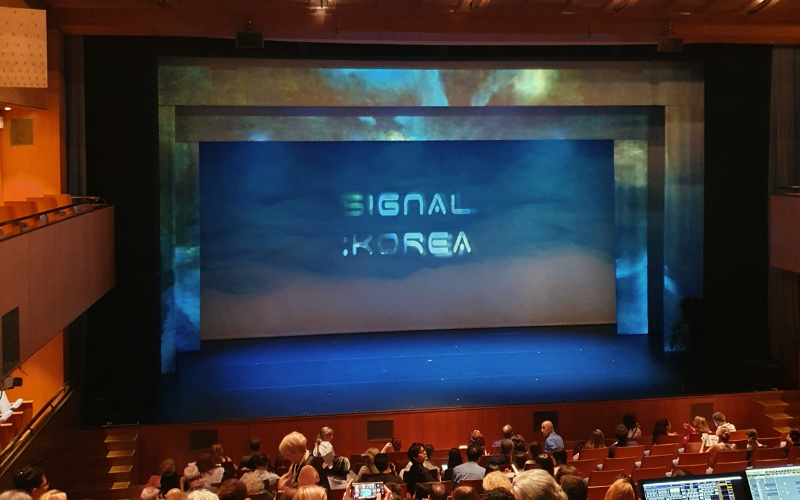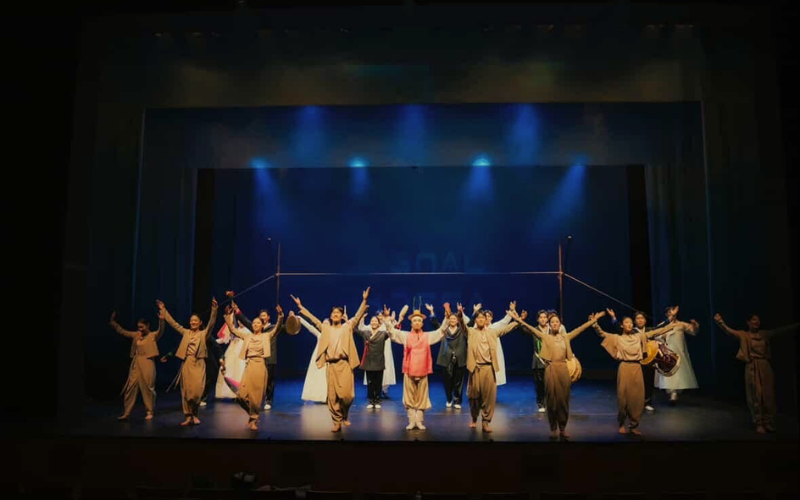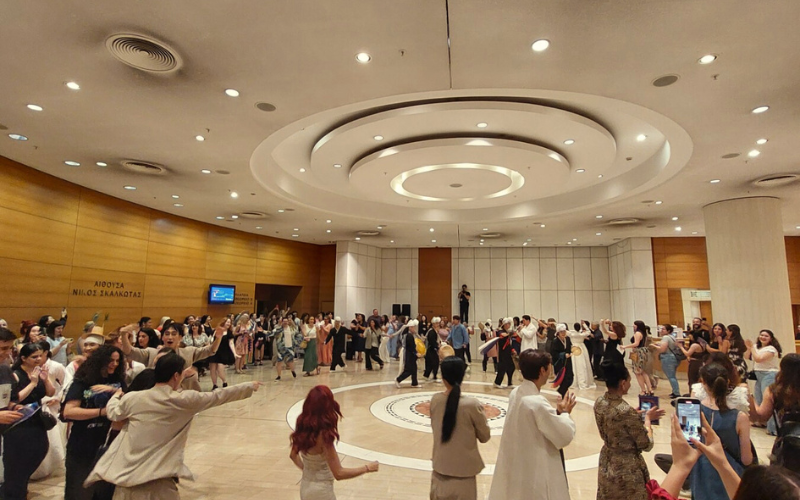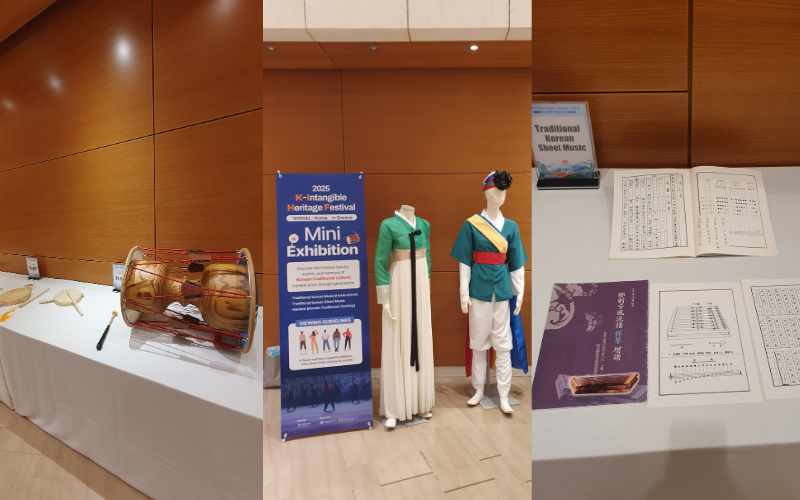The Korean Embassy in Greece, the National Intangible Heritage Center (NIHC) of Korea and the Greek Ministry of Culture co-hosted a traditional Korean performance on June 28 titled “SIGNAL: Korea” at Megaron the Athens Concert Hall, as part of the K-Intangible Heritage Festival. Following its debut in Crete on June 21, the event aimed to promote Korea’s living heritage through traditional performances presented to a Greek audience.

The performance featured UNESCO-recognized Korean art forms such as Nongak (farmers' music), Talchum (mask dance) and Jultagi (tightrope walking), blending traditional musical instruments and rhythms with modern visual elements. Structured around a symbolic narrative, the show unfolded with a prologue titled “Chaos: Breath”, five thematic chapters (Land, Fire, Wind, Water, Heart) and an epilogue titled as “Return: Reincarnation”. In the leaflets distributed right before the show, Art Director Lim Young-ho described SIGNAL: Korea as a: “living narrative, born where tradition meets the present (time). A movement that rises from the vibration of the earth, bursts like fire, travels like wind, and flows like water-only to return, finally, to the heart”. SIGNAL: Korea can be described as a living experience where tradition and modernity intertwine through movement, sound and rhythm to create a new, vibrating and emotive form of Korean identity on stage.

Among many captivating moments delivered by Korean traditional musicians, the Performing Group U-Hee and the Korean Dance Company Kyul, tightrope walker Nam Chang-dong offered a memorable performance. Nam’s act in particular, was both skillful and emotionally resonant – blending technical mastery, humor and cultural depth. Balancing effortlessly on the rope while executing complex and daring techniques, he moved with both grace and wit—engaging the audience in an interactive act that drew laughter, applause, and deep reflection. With each step, he embodied the spirit of Korean tradition… in motion!
The following are excerpts from an interview conducted on July 4 via Instagram with Nam, who shared his thoughts on Korean tightrope walking, performing in Greece, and his hopes for the future of Jultagi.
What do you think is the greatest charm of Jultagi?
The greatest charm of Jultagi is that it allows you to become a “special person.” When I was a child, I watched a Jultagi performance while holding my father's hand, and to me, the person walking the rope looked just like a superhero. Everyone, at some point in their childhood, dreams of becoming someone special. I was no different. I wanted to be someone special, and that’s what led me to start Jultagi. Even now, whenever I step onto the rope, I feel like I’ve become that special person, and I continue to love Jultagi because of that feeling.
How did you feel after performing for the Greek audience? Was there a moment that stood out to you?
The performance in Greece was incredibly memorable for me. It was a moment when I was once again amazed by the power of art to connect people, even when language isn’t shared. Whether I was speaking on the rope, showing the audience my techniques, or meeting them afterward in the lobby — there wasn’t a single moment that didn’t leave a mark on me. Even now, I remember it as vividly as if it just happened, and it brings tears to my eyes. I am truly grateful to the people of Greece for giving me such a joyful and unforgettable experience.
What is the most important thing to keep in mind when performing Jultagi?
The most important thing when performing Jultagi is to never lose your sense of fear. There’s a Korean saying: “Even monkeys fall from trees.” No matter how good you are on the rope, you must always remember that you can fall and get hurt. So being cautious and alert at every moment is, I believe, the most important thing when doing Jultagi.
What kind of stage or project are you dreaming of for the future?
Jultagi is a traditional Korean art. However, since it involves physical movement, people sometimes mistake it for a sport. That’s why I want to create new kinds of performances — like the one we did in Greece — that combine Jultagi with other forms of art such as music and dance, so that Jultagi can be more widely recognized and appreciated as an art form by people everywhere.

The performance concluded with a touching moment as performers stepped offstage and moved into the audience, gently inviting everyone to join them in the outside lobby. Greeks and Koreans formed a joyful circle, dancing to the rhythm of Korean percussion. This act of unity transformed spectators into participants, weaving cultures via the threads of shared movement and neutral celebration.

In addition to the indoor show, visitors explored an interactive cultural booth offering Korean percussion instruments, hanbok displays, and small traditional games. Those who completed a short questionnaire, at the end, even received small appreciation gifts.
How about this article?
- Like1
- Support0
- Amazing2
- Sad0
- Curious0
- Insightful0


